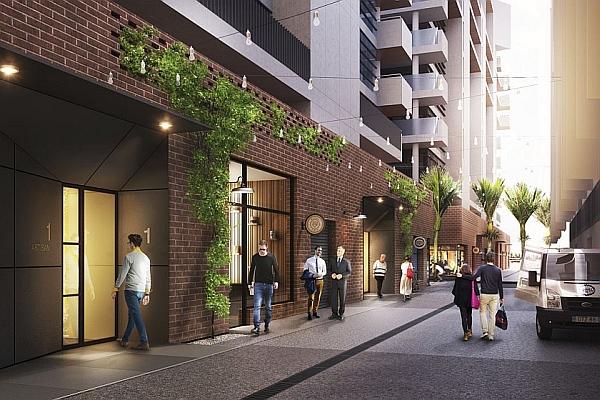Published on the 31/08/2017 | Written by Donovan Jackson

But to get off it, all that data must be harnessed says Precinct…
The latest technology buzz is all well and good, but more telling are insights from users in the field. That’s why we turned to Paul Singleton, Operations Manager at top-end listed property owner & manager Precinct Properties, to find out what excites him, and what does not, about the latest tech rapidly engulfing the sector he works in.
We met Singleton at an event hosted at the sparkling new offices of architect Warren & Mahoney where he discussed Precinct’s role in the development of the Masons Building and other Wynyard Quarter buildings on Auckland’s waterfront. The event was part of the lead-in to the upcoming Facilities Integrate show 27-28 Sep at the ASB Showgrounds.
“The biggest thing is that we try to find things that will plug into the bespoke system that we use for measuring and monitoring various aspects of building management,” Singleton told iStart. “That’s important because we don’t want to have to work with disparate systems, which creates an additional overhead with data entry.”
This is a crucial insight because it shows that building managers, like those in many other industries, don’t want systems that drive up complexity, but rather ones which drive it down. Singleton added that a further important factor doesn’t concern the production of more data from the likes of, for example, Internet of Things sensors, but rather how to make use of that information.
“There’s a real challenge in terms of being overwhelmed with the generation of more data. But none of that data generation is of any value at all if it doesn’t provide building managers with actionable information to improve the way we do things.”
So, Singleton went on to explain, the introduction of a Building Information Modeling (BIM) system which integrates with the back-end property management suite (in Precinct’s case, OPM from Ofek Technologies based in Auckland) is handy because it allows, with the scan of an asset tag with a mobile device, the ability to see all information relating to that asset and its management.
If maintenance is required, it can be scheduled on the spot, with purchase orders sent to the relevant contractor, and updates which reverberate through the connected systems. The resulting task automation accelerates the intervention, while providing for close financial management, with accuracy and immediacy of maintenance information, allowing that asset to be returned to service faster. “We’re looking to elevate the asset management system into the property management system, and that then becomes the basis for automated workflows,” Singleton added.
And, perhaps surprisingly for the technologists, when pressed if IoT is particularly exciting to him, Singleton was a little circumspect. “IoT is advantageous in being able to be agile and being able to deploy things quickly and easily, but, regardless, a base level of monitoring should always be scoped and specified properly when developing and re-developing buildings, or upgrading existing systems,” he pointed out.
“We’ve done a number of hefty capital programs, like metering and controls upgrades, so we monitor a lot already anyway. Within our development program the operations team have input on these specifications. But with IoT, we have got our first dashboard online, and yes it does enable more, faster and cost-effective solutions for monitoring.”
The trick – again – isn’t so much the IoT. “It’s the integration. You want to put a sensor in an office so that if someone says they’re not happy with the conditions, you can see exactly what the situation is. But that information is only useful if you know what to do with it. And if it directly networks to the building management systems, which is the control point to adjust things. When you have that ability, then it starts getting exciting, particularly if you can roll it out without major capital outlay.”
So, what, then, does excite Singleton? There’s virtual reality, which he said is accelerating the ability for the cross-functional teams involved in designing and managing buildings to collaborate effectively; VR is changing how development happens.
But despite the flash factor of VR, there’s something a little more mundane – but fundamental – that he said must be addressed first. It is something of an elephant in the room.
“Over the next decade, we’ll need to get our heads around how we go from having a small amount of data, to having a massive amount. How are we going to use that data to model quickly, to operate better, not just day to day, but over the long-term lifespan of assets? How will we better target spend and how will that data feed into developing new buildings and help us know what works and what doesn’t? The prospects raised by so much additional data are both ‘cool’ and daunting at the same time.
“That’s because you can be overwhelmed by it all and get bogged down with a data overload – and as with all information, it is essentially useless unless you can do something with it.”
For more insights into technology which is impacting how buildings are designed, constructed and managed, iStart readers are invited to register for the Facilities Integrate trade-only exhibition taking place at the ASB Showgrounds on 27/28 September. This year’s event introduces Tech World, where the latest information technology solutions for buildings will be showcased. Attendance is free with pre-registration, or $25 at the gate on the day.




























